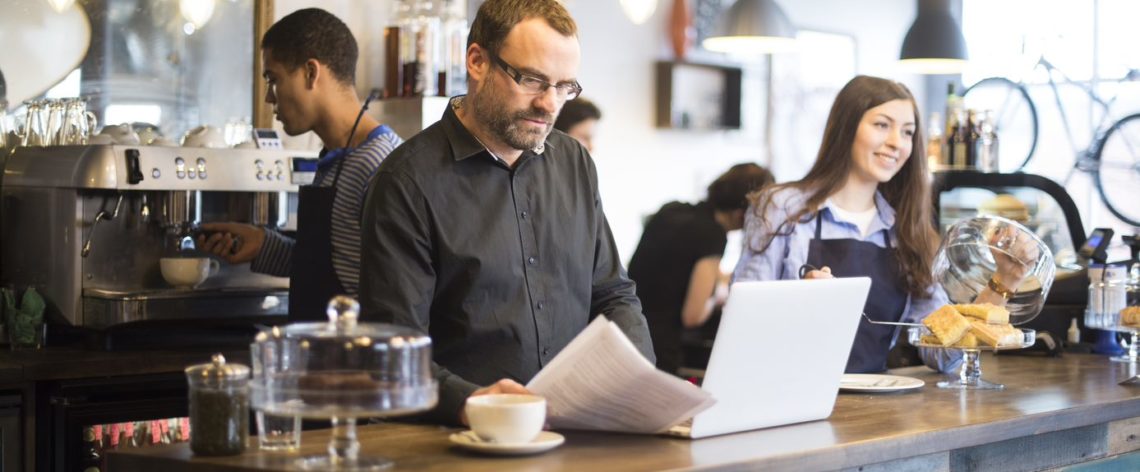When a business owner is thinking about their new venture, having a solid understanding of the industry, competition, and keys to success is crucial. This philosophy is especially crucial in the café or coffee shop segment. A café is one that fits between a few niches, from local restaurant and boutique to the pick-up orders to go service.
That all being said, the café industry is saturated by huge corporate chains to smaller, privately owned and intimate facilities. While this represents a challenge for a start-up, it’s not an impossible feat. In fact, several smaller cafes have made a huge impact in their local communities by creating a solid brand, serving a niche consumer market, and following a few crucial steps for breaking into this industry.
Create a Concept that Allows You to Stand Out
Standing out is vital to launching a café. Whether it’s serving a consumer niche, in a certain location, or providing unique coffee’s and speciality beverages, a café needs to set itself apart from others to succeed. There are several ways of accomplishing this important first step.
Become a Specialist
Not all coffees are the same. Some are more robust than others, and some are simply harder to find. There are also specialised beverages like cold brewed coffee, espresso, and even some that are flavoured that you can sell and specialise to your customers desires.
Create a Theme
Some of the best cafes are designed with a theme or décor style that caters to a niche. Whether it’s a novelty or a proven commodity, establish a theme that makes a statement.
Expand Product Offerings
The best cafés don’t only sell coffee. They diversify their products to include edible treats like pastries, snack-sized sandwiches, or other food items. Consider linking your additional food items to match your theme.
Décor and Atmosphere
Along with the theme, creating a warm and welcoming décor and atmosphere is another way to pull consumers into your new café.
There are also some important practical or logistics-based factors about running this type of business. For example, is your café going to be beverage-specific or will you offer food items as well? Is this location going to be a drive-thru or sit-in location? Also, do you have the flexibility to offer all service types? Each of these questions and more must be asked and clarified before beginning the process of building your new café.
Complete Customer Research
Every successful business starts with a solid plan. For a café, it’s important to outline and determine who your target audience will be, so you can create the atmosphere, décor and every item above. The main problem comes with trying to first determine if you want to target a certain consumer or provide a wide-consumer segment target.
One of the biggest issues that new café owners struggle with is trying to capture multiple demographics, assuming that they will be an instant hit. But this rarely works. The better and more successful model is to create a café that caters to a group of customers. For example, consider setting up a café in a busy business district, or one located near a fitness centre or even shopping malls.
Each of these items can be determined by first completing some consumer research. Here are a few specific items to consider:
- What is the motivation behind their visit? People visit a café for multiple reasons. In some cases, they simply want a warm cup of coffee, need that pick-up, or want to set up shop to connect to a Wi-Fi network and catch up on work.
- What are your target audience’s preferences? Does your café serve a certain consumer group? Does your potential customer have preferences on the layout or design of your building or the products you sell?
- What is the lifestyle of your target audience? A consumer’s personal lifestyle also makes a big impact on the success of your café. This also makes an impact as to where you set up shop. For example, those living in rural areas may prefer an outdoor lifestyle, while those in city centre or art-enhanced communities may include younger, urban professionals.
Consider the Costs of a Start-Up
Arguably the biggest impact of any start-up business is cost. This is the fundamental stumbling block that all entrepreneurs struggle with – regardless of the business type. While it’s impossible to be 100 percent accurate when forecasting expenses, there are some important items to consider that will help you create a budget and set yourself up for success.
- The location: The first step is securing a location to open your café. You’ll need to determine the cost of leasing or purchasing property, any deposits and rent, and other fees.
- Décor (inside and out): You’ll also need to design the décor for your café. Some facilities will require more money or time, which typically increases the cost.
- Overheads: Every business has overhead expenses, such as utilities, cafe insurance, and payroll to consider.
- Equipment and tools: There are several items to purchase for opening a café. Speciality or industrial coffee making equipment, water filtration, and other tools are needed. Additionally, cold storage including refrigerated or frozen goods, cash registers, cups, cleaning supplies and more will require a budget.
- Product: Of course, you can sell coffee if you don’t have supplies. All the ingredients you require from coffee to food items will need to be factored in and budgeted for. This also includes factoring in the cost of napkins, cups, sugar, and other items your customers demand.
When starting your business, coffee shop insurance options for retailers should also be considered.


